 | « Back to article | Print this article |
Dr Pinakin Shah discovered why Bhutan is a 'celebrated land of happiness' on his trip to the country.

“Destiny has put me here. I will protect you as a parent, care for you as a brother and serve you as a son. I shall give you everything and keep nothing. This is how I shall serve you as a king.” - His Highness Jigme Khesar Namgyel Wangchuck in his first speech said this to his subjects, after the crowning. If you have such a king at the helm of affairs, all Bhutanese can rest in peace and enjoy!
Nestled in the heart of the mighty eastern Himalayas lies a jewel; a speck of green that is part flower bed, and part dynamic landscape.
At first glance it appears to be a simple, small country with a village-based subsistence lifestyle.
Yet beneath the surface, it’s immensely rich and has a diverse community comprising various groups such as yak herders and the Nomadic Laya people, as well as royal and governmental hierarchies, lamas, Rinpoches, and abbots.
It is the only country in the world to have banned smoking and plastic bags effectively.
It took a tiny Himalayan nation to challenge the concept of Gross National Product as a yardstick of advancement. Ever since 2002, promoting happiness is a serious business in Bhutan.
The King decreed that Gross National Happiness is the primary objective of this Himalayan state.

Bhutan is indeed a celebrated land of happiness; ‘a piece of heaven on Earth’.
It stands tall between India and China -- Tibet flanks its north-west. Position may render it vulnerable, but values give it the strength.
Even the air and soil of the land seem to be happy; and they penetrate to suffuse us with warmth. It has more mountaintop retreats than multinational corporations, more Dzongs and monasteries than factories, and more number of beautiful trees and hills than people, making it an enclave for rest, solace and recuperation.
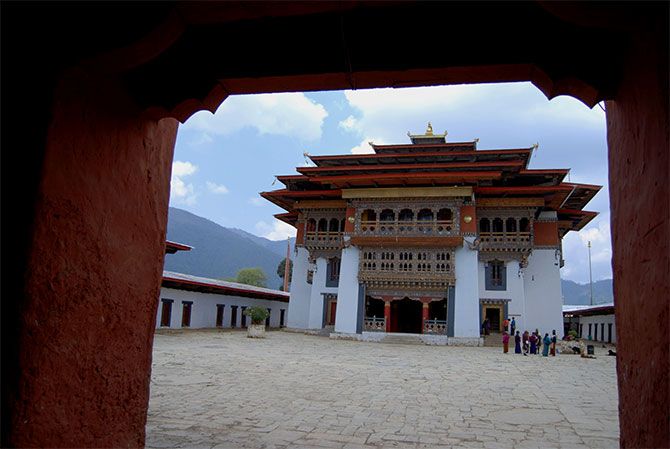
It presents tourists an unending symphony of light, colours and shapes.
Perched on a gentle slope over the hills, it remains a safe and protected terrain -- at one end (south) by the vivid, dense, impenetrable subtropical forests and at the other end (north) some daunting snowcapped rows of peaks, oaks and cypresses.
From Delhi, we went by Druk Air to Paro. The plane flew over the vast expanse of snow-clad ridges and summits, extending from one horizon to the next.
The Himalayas seemed as infinite as an ocean, frozen at the climax of a storm. Lower slopes of the mountains were engulfed in clouds. The glide was smooth, irrespective of the turbulence below.
But, this airborne encounter leaves one unfulfilled -- the only meaningful way being to tread on foot enduring the weather and ups and downs.
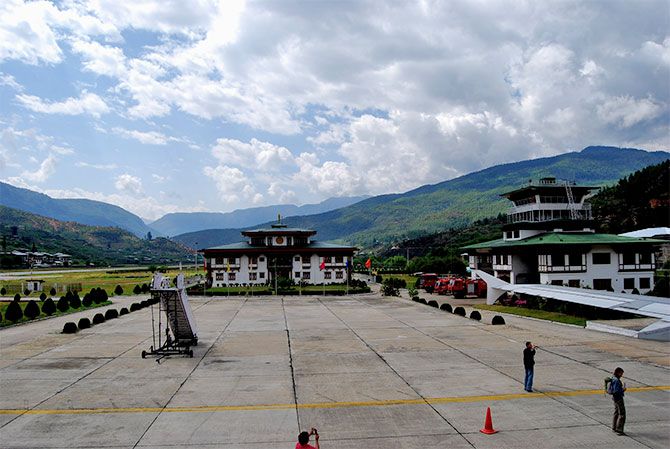
It was small plane and a matching airport to welcome us. Aah! What a cute, lovely place to land! The most beautiful airport I had ever seen -- it was perched between the hills on either side and greenery in between. The slow descent into the deep, green valley laced with streams and rivulets was a joyful experience.
Red and white stand-alone houses -- stood meditatively -- scattered around in the background; and a royal monumental airport in the foreground with its shingled roof, carved cornices and colourful motifs of lotus and clouds.
Our flight passed over some of the most revered snowy peaks of the Himalayas, viz. Everest and Kanchenjunga in the morning glow of sunlight.

On landing we felt at home, since there was no usual airport protocol, no security checks, no strained men with guns, no police; just a royal walk to your car in an ambience that welcomes you.
They believe in internal strength and maintain that show of any external power is a manifestation of hidden fear.
In this clock of time and seasons we are at a point called spring, where winter and summer shake hands. We reached the fabled land when the winter blues were just fading away and the air held the promise of spring.
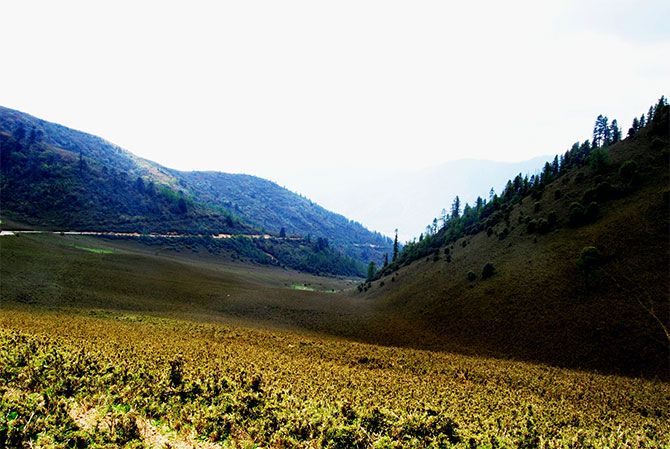
In the early half of our trip, autumn ruled and the romance of fall was looming in the air. The temperatures dropped to 10 degrees C and sky as well as Earth rolled in changing colours. Earth was denuded of floras.
All the trees were bereft of leaves, and the barren curves of Earth were exposed to the bright sunny sky with bones all laid bare -- leafless.
The curves, aroma, texture and contours were laid tantalizingly bare before our senses, to let us devour her real naked beauty. We treaded ahead with baited breath to greet the glow and glory of the changing weather; and as the days rolled by we relished the gentle kiss of spring, heard the footsteps of an approaching bloom, and by the time we travelled through the country, the dance of spring was at a crescendo with her incumbent enchantments.
It is difficult to capture the immensity of beauty of such a magnificent place, and still harder to describe it with a limited vocabulary I possess.

The Bhutanese are an overtly religious lot and this Himalayan Mountain Kingdom is a jewel of Buddhism (state religion). It is very sparsely populated. Roughly 60 percent of the population is Buddhists, 30 percent Hindus, and rest Christians or Jews. This land of unspoiled beauty and tranquility is spread over 47000 sq km and has only 700000 people to share it. This sojourn was more fulfilling than our expectations.
Our 14 day stay was certainly an ‘out of this world experience’ -- each day superseded in rewards than the previous day.
We met some amazingly young men and women in their nineties and some who had crossed 100 years.

People went to work in their laid-back, even-minded attitudes. Petite women, looking attractive in their colourful attire (Kiras), and men gallant in dark striped Ghos and white wrap-over-shawls. That did make us ponder… what has all our accounted growth given us?
In Druk Yul or the ‘Land of the Thunder Dragon’, life moves at a leisurely pace. It makes us ask ourselves some serious questions about the speed at which we all race.
“Where the hell”, I asked myself repeatedly, “are we rushing to, in this rat race of life?” Even if we win, don’t we ever remain rats?
Some rue the absence of proper medical aid, though that may also be a sign of lower number of lifestyle-related diseases. Bhutan is blessed with a 300-year-old culture, rich traditions, happy people and zero poverty.
It boasts of zero crime rates too -- people leave their homes with their gates and doors open in their absence.
There are no beggars here, and the country at large enjoys an unpolluted, healthy and joyful environment. The cities are clean, shanties are grossly missing and the houses themselves boast of a rich and unique tradition of architecture.
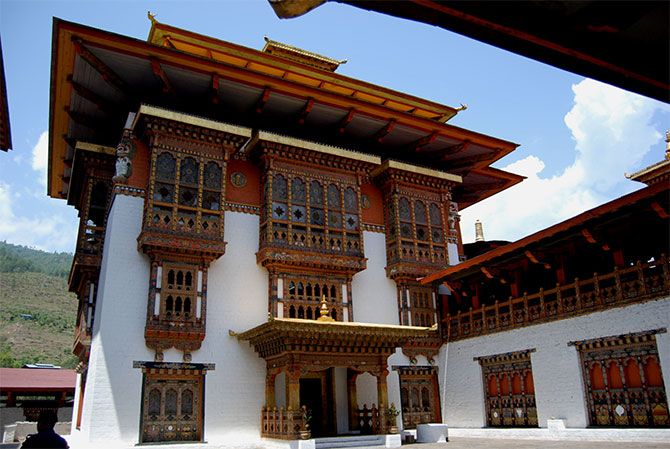
Bhutan’s natural setting is pristine and unspoiled. Chortens, monasteries and Dzongs or fortresses dot the landscape like shining beads that connect salubrious hills and valleys.
As I pen this, I relive the rich experience I had at Bhutan.
I remember how while trekking through forests, we would suddenly find ourselves in the heart of a village. The landscape used to be punctuated by grazing yaks, plots of tawny buckwheat, lush green paddy terraces, apple orchards, Dzongs, monasteries, and ornately woven fences of bamboo and mat which mark the borders, but all blended in well.
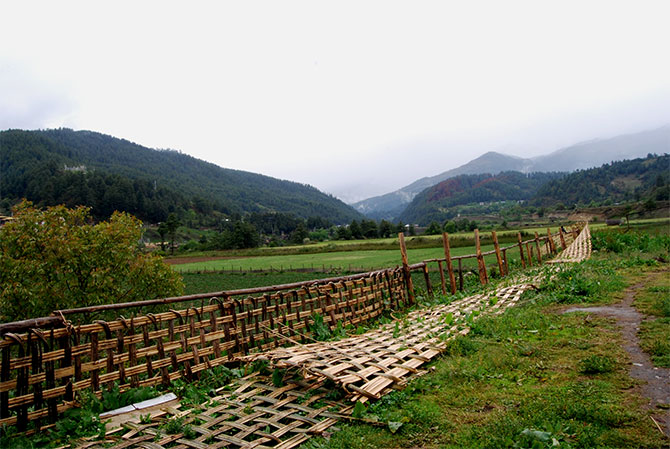
All through the terrain umpteen number of short bamboos guarded the driveways, varieties of Rhododendron dotted the valleys, and blue poppies, mossy fur trees, and flowers lined the ways.
Village homes made of mud give you an earthy feel. With their pleasantly coloured and aesthetically decorated facades, they portray outdoor museums for Bhutanese architecture. Made with the liberal use of stone, wood and mud, these buildings are robust and handsome, and make us instantly feel at home. Their earthy feel is a distinct source of pleasure. They are designed ornately, yet in a way that they merge aesthetically with their surroundings and remain in commune with rest of nature.
Some homes had a phallic symbol painted on the front, or a statue of the same mounted on the rooftop. It is associated with Lama Drukpa Kunley who loved wine and women as much as religion. This symbol is meant to drive away evil!
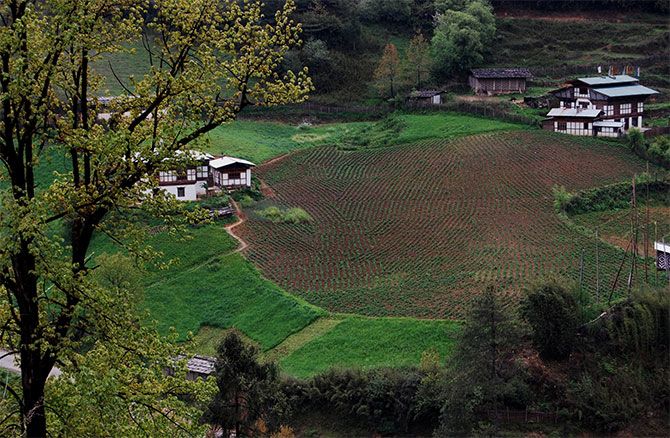
Bhutan is land of curves, giant hills and mountain passes -- a junctional zone between two valleys. Passes are places of worship, adorned by stupas and multi-coloured flags to grant peace and safety to all.
I experienced a spiritually charged, expansive cleansing process at one such pass atop a huge hill. I can’t analyse or justify it technically. The flags flickering in the mountain breeze created a spiritual ambience that stirred something within the innermost depths of my being. I felt being reborn.
Bhutan has some natural hot water springs that rejuvenate one’s body, mind and spirit, and their medicinal properties cure ailments. They are located at Gasa, Chubu, Dur, Duenmang and Gelephu, to name a few, and are called Tshachus.
En route the mountains, roads were laden with plying vehicles (Prado and Pajero) vying amongst them for supremacy.
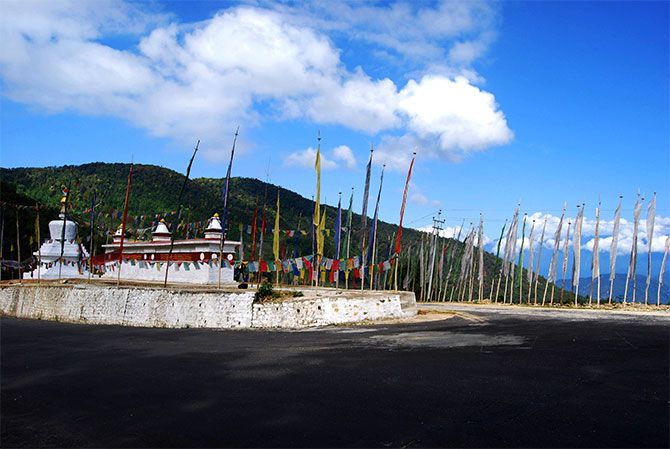
All through the land cleanliness was eye-catching. Its beautifully decorated monasteries dotted the landscape with their iconic rotating prayer wheels.
The Dzong forts harbour the populace in times of war, and play home to Bhutan’s lamas in hours of peace. The forts we visited were located on beautiful sites permeated with a touching serenity and educative ambience.
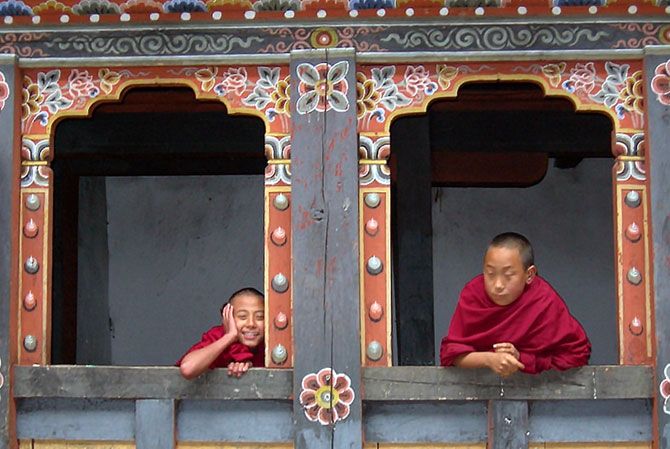
Lamas of all ages moved around busily in the Dzongs, clad in bright maroon flowing robes. Naughty kids ran around giggling, as the Lamas went about their business. They all singularly greeted us with a warm smile of causeless affection, something unimaginable, even the young ones, however there were no women folk in their Dzongs.
Seeing this, we felt that if we have to recourse to Buddhism, we would have no regrets -- in fact it could be a change for good. No doubt it is founded on love, that all inmates were so lively and light.
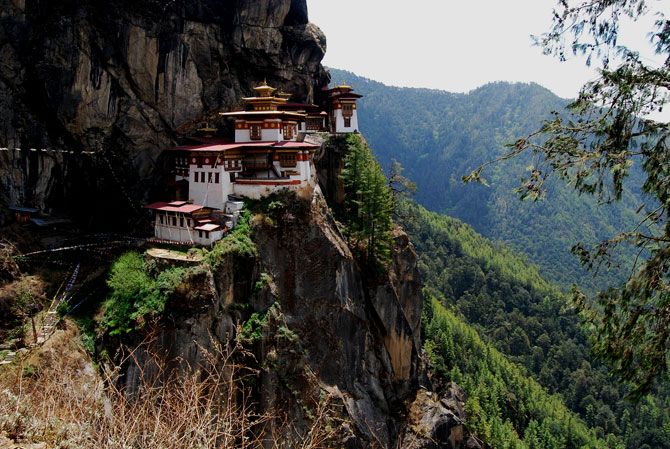
Of all the Dzongs I visited, Tiger’s Nest was the one most beautifully located (Takshag Monastery clinging to hills) in the upper ParoValley. It was the most happening Dzong, and struck my fancy the most. It was surrounded by blue pine and spruce forests.
The uphill climb was arduous but was energising, and the summit fulfilling. It was a unique feat of rustic old time architecture. At the end of our strenuous climb to the fort (Tiger Dzong), we found ourselves facing one of the most stunning sights ever.
On the way to the top, beautiful flora, fluttering flags in the chill of the morning dew and serenely flying butterflies in the misty air cast their magic spell. It was a daunting as well frustrating task to catch those butterflies even with the tele-lens that we were armed with.
As we entered the edict, a cloud of incense enveloped us, and in a way sanctified us of malignity.
Of all the places we visited so far in tour, none has sent us back so changed and charged. It was a spectacle that moved us into the realm of silence, where the emotional experience was no more sensual or verbal. Silence truly is the essence of being. I felt as though I had been entrusted with a rare precious treasure. I wrapped it in a silken fold of silence.
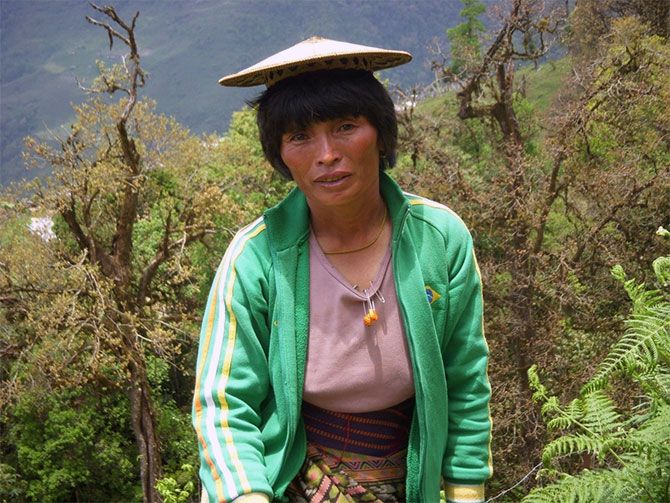
I can’t help but mention what contrast we witnessed as we left this country for our own. Just a fence across and such a radical difference in ethos, culture, economic status and integrity of people! We landed in Assam through the north border at Gauhati. Poverty stared us in the face and the apathy of the officials struck us like lightning.
Lack of hygiene and civic sense, and thorough absence of cleanliness was so striking and beyond all endurance. There is something intrinsic in Indians that abhors cleanliness. It is hardwired into our culture and genes.
Guilt rushed through my being like a whirlwind; after all as responsible citizens we all are accountable for this pathetic state of affairs.
If it were not for our national spirit, we probably would have opted for an exile in this enchanting neighbourhood.
We have tried to project beauty through a slide show, Glimpses of Bhutan. Here we are grappling with an idea, ‘How to make a two-dimensional photo into a three-dimensional reality for you to partake’. It is all for our inadequacy, if we can’t reach you where we landed.
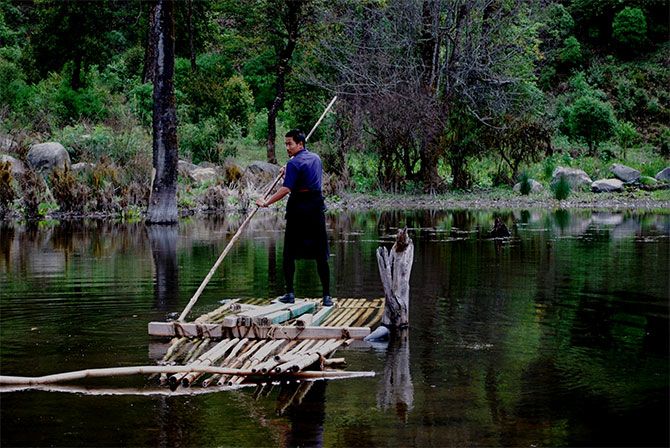
Did you know?
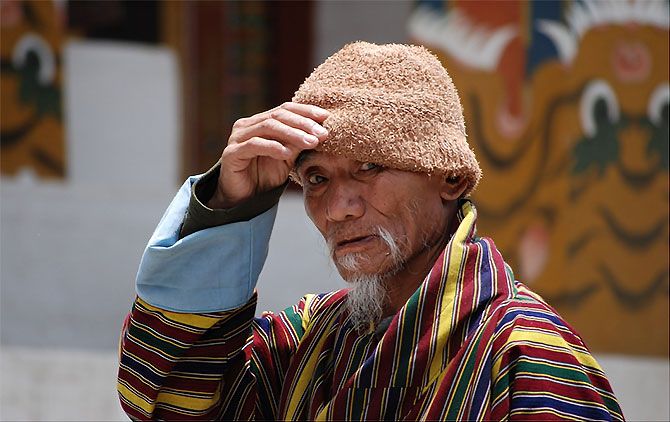
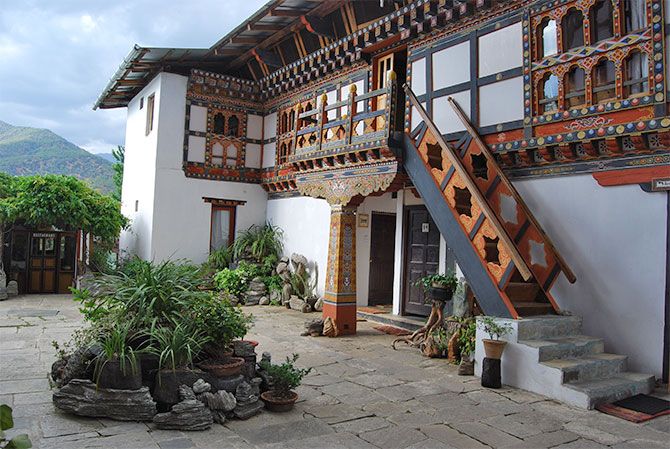
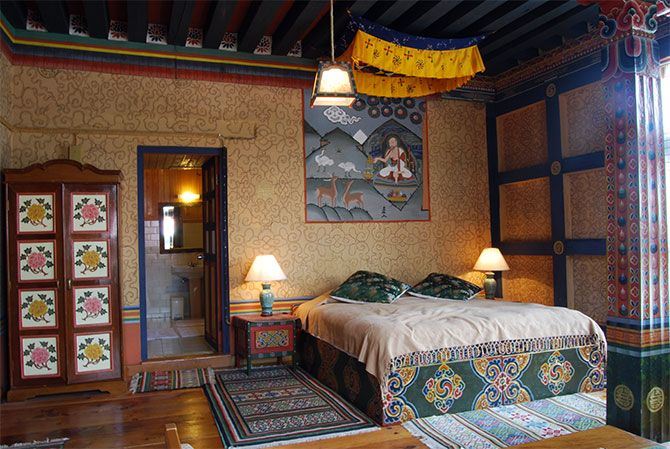
Photographs: Credit Dr Pinakin Shah
Dr Pinakin Shah is a consultant Orthopaedic Surgeon practising for the last 35 years in Mumbai. He is also the author of Garden of Joy and The Art of Healthy and Joyful Living.